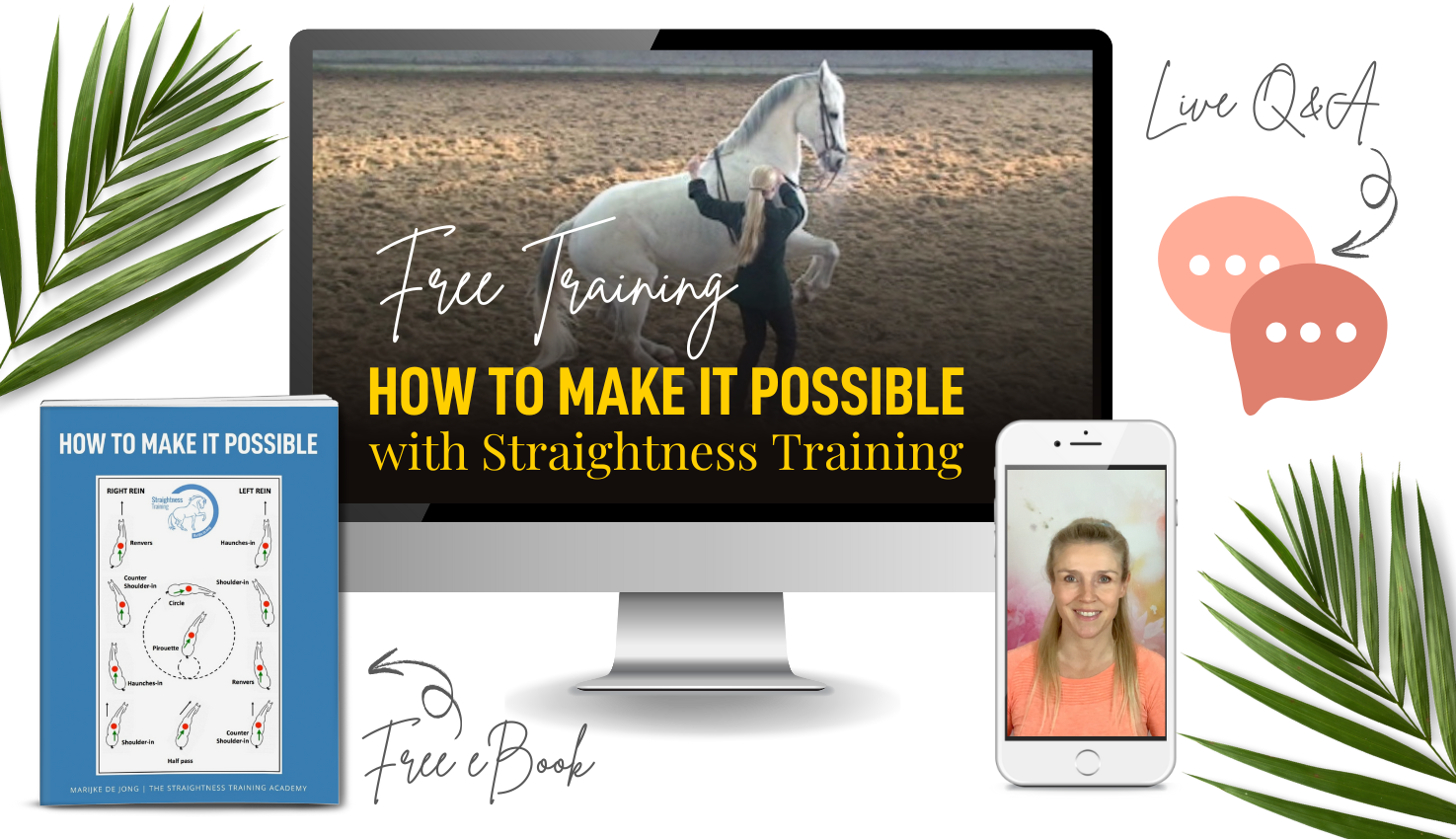- Variety is the spice of life!
- The Comfy Comfort Gets Boring!
- How can we avoid discomfort?
- We Need To Provide Variety!
- Let the blood flood flow through his veins and let him crack his brains!
- Embrace Your Horse’s “Gym Face”
- The Mental Beneftits of the Stretch Zone:
- The Physical Beneftits of the Stretch Zone:
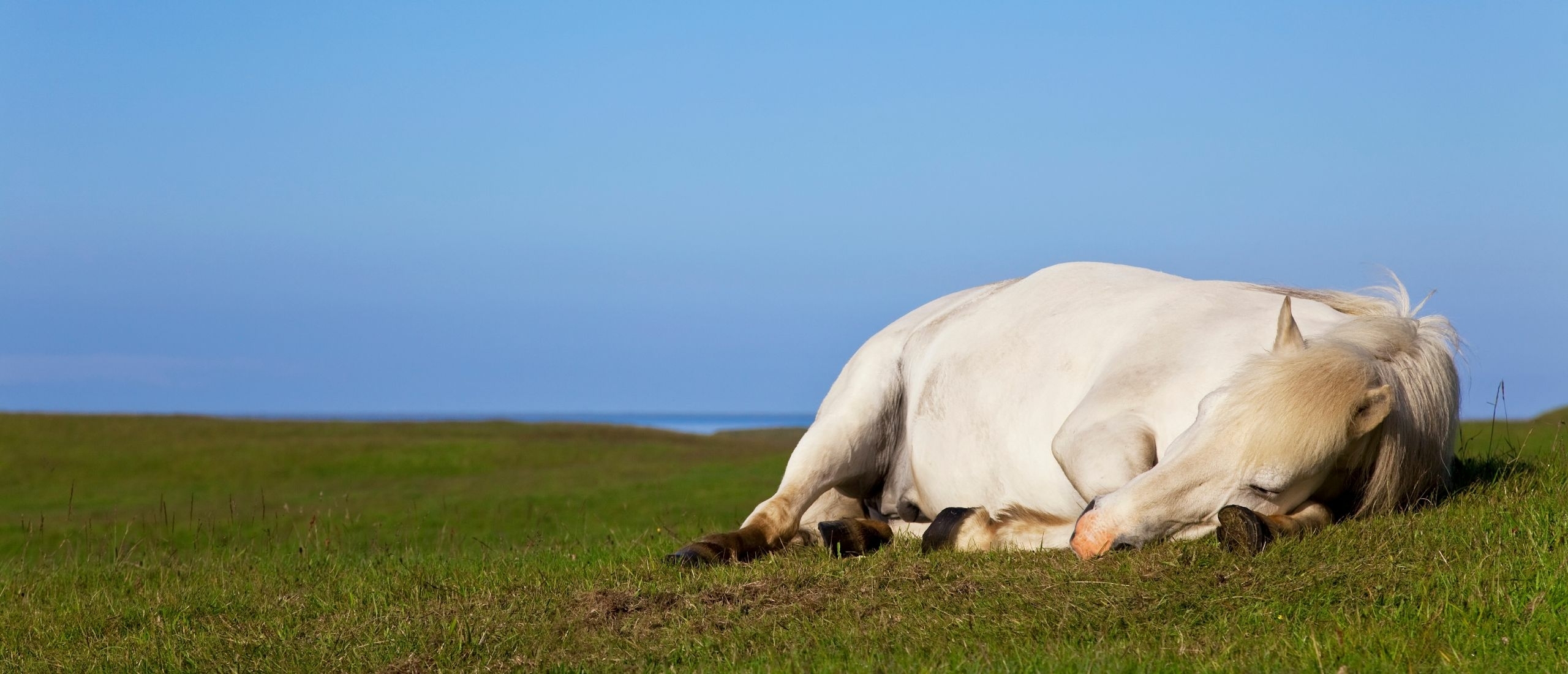
Too Much Comfort Feels Uncomfortable
As human beings, we’d love to do things.
To take action.
To move.
But after a while…
We’d like to relax from that activity.
To take a break.
To put one’s feet up.
But after a while, we start to feel a sort of restless again.
So we start to take action again.
It’s a natural cycle.
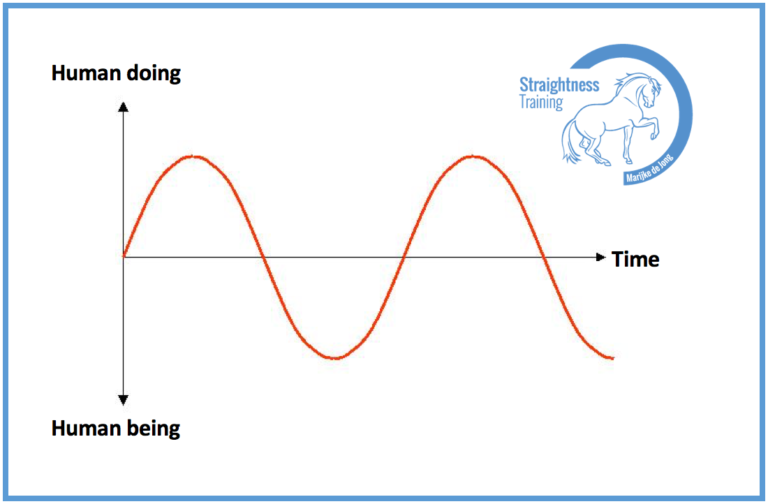
We go from human ‘being’, to human ‘doing’, to ‘being’, to ‘doing’, and so on.
It’s a natural balance.
So we don’t aim to be a “happy flat-liner”.
Because if everything would be and stay the same, day in day out, we would be bored.
With too much comfort we will start to feel… uncomfortable.
Besides this:
We can only experience comfort, because we also know a form of discomfort.
And happiness can only exist because of unhappiness.
Black can only exist because there is white.
And the magic is in the grey.
We need this variety.
Variety is the spice of life!
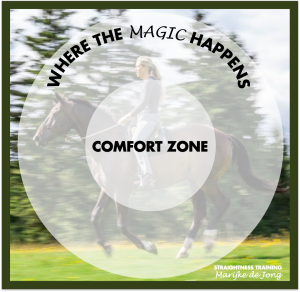 It’s the same with horses.
It’s the same with horses.
If we take a look at horses in the wild:
They do not only live in a comfort zone.
They face some daily challenges:
- They have to search for their food and water.
- They move from one place to another.
- They have to keep an eye onpredators.
- Competitors may arise on the horizon.
So their instinct and their brains are triggered when living in the wild.
However, as we take them into our domesticated world, things change for them:
- We provide food and water, so no action required on their part.
- We provide a stall for them, where they stay throughout the year.
- We provide safety, so there’s nothing to keep an eye on.
- We keep our horse separate from others, so nothing to worry about.
Everything is there.
Every day the same routine.
It’s one big comfy comfort zone for our horses.
With plenty of room for boredom to creep in.
The Comfy Comfort Gets Boring!
It’s exactly the comfort zone that easily leads to a sense of discomfort in our horses.
And even stress!
We all know those horses that are kept 23 hours “comfortably” in a stall, who developed unwanted behaviors and repetitive patterns such as cribbing, waving, and stall-walking.
But those habits are just physiological or intuitive equine responses to an unnatural and frustrating situation.
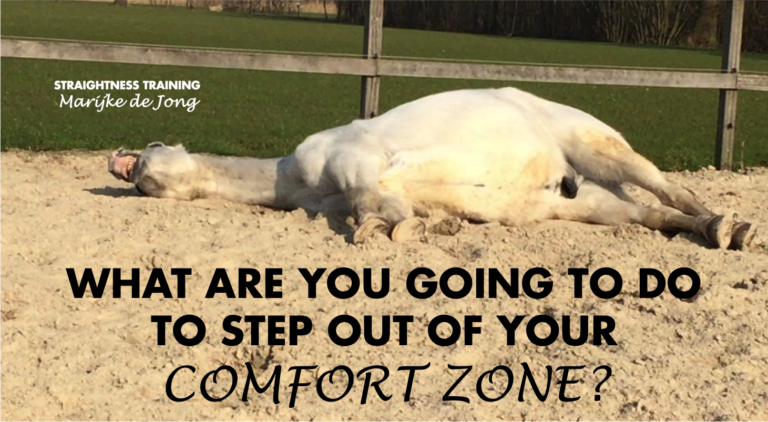
However, also with horses who have more ‘freedom’ and who’s natural needs are met, discomfort may arise.
And also with horses who are loved to the max!
Especially when we’d like our horse to be happy ALL the time.
Then we often try to avoid anything that might upset or stress our horse.
And even in training sessions, we try to keep things as comfortable as possible.
So we avoid any kind of pressure, and we give him a lot of treats.
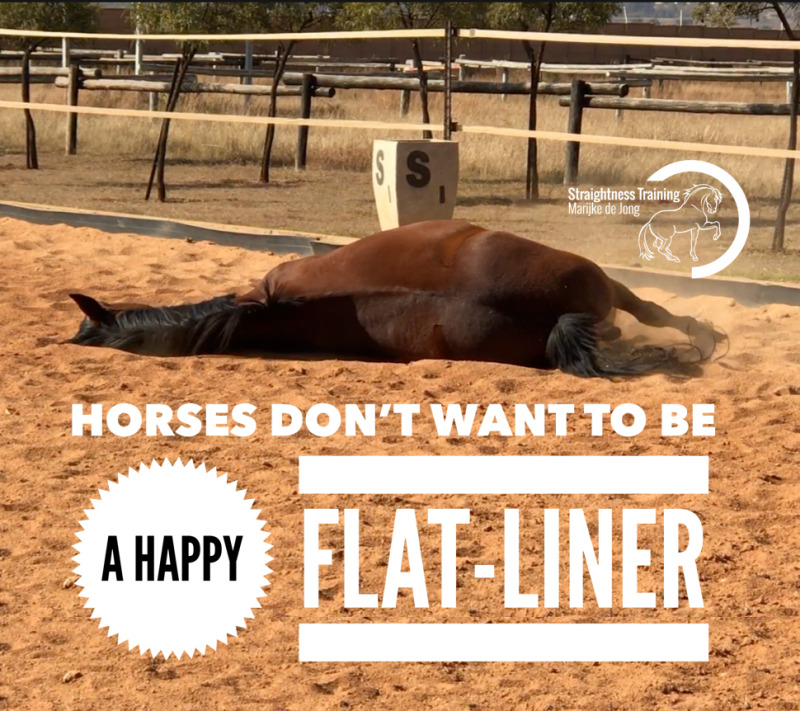 But what if our horse doesn’t want to be a “happy flat-liner”?
But what if our horse doesn’t want to be a “happy flat-liner”?
What if that’s not in his instinct?
What if his brain isn’t wired that way?
What if it’s against Mother Nature?
Well…
Then our horse will come up with a solution :
He will create his own variety !
For example:
- He might start to spook in every corner of the riding arena
- Or react overly fearful to simple objects.
- He might start to challenge you, if you’re the only one he meets during the day.
- So he’s starts to be nippy or pushy.
Because – in a way – he says:
“Hey, I didn’t sign this contract, where it’s stated:
My human gives me all the comfort I want:
- Food, water, salt blocks, knee-high straw bedding, turnout every day, some other horses for companion, expensive waterproof blankets, a tailor-made saddle, treats, hugs, massages, and so on.
In return:
- I behave.
- I express happiness by showing a friendly face and keeping my ears in a cute, forward position.“
Indeed, he has not put his signature underneath…
So he’s free to go and behave in a spooky, challenging, unwanted way.
So what to do about this?
Well… as always… we should not fight the symptoms.
So a better question is:
How can we avoid discomfort?
To answer this, let’s have a look at the three “zones” concept.
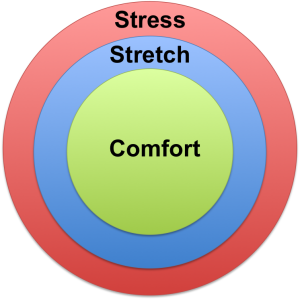
In this concept, there’s a comfort zone, a stretch zone, and a stress zone:
- The comfort zone is the zone where everything is known, stable, easy, safe, unchallenged, secure, risk-free, mediocre, routinely, bored, and in a way a sort of lifeless.
- The stretch zone is also called the learning zone. It’s the zone where action, excitement, opportunities, dreams, and abundance live. It’s also the zone of the unknown, exploring new things, facing challenges, and the zone were changes take place.
- The stress zone is also called the panic or danger zone, and that’s not a zone we want to enter. Because this is an extreme zone were fear, frustration, tension, anger and other disempowering emotions live.
Now for optimal mental and emotional balance, our horse needs both the comfort as the stretch zone.
In the wild, the stretch zone arises automatically, because a horse is in a state of survival, he can flee or fight when scared, and express instinctual reactions, he can graze, move around all day, find a position in the herd, so he is physically challenged and mentally stimulated.
But in the domesticated world, where our horse spend his time in comfortable, but more unnatural conditions and situations, we need to consciously step outside the comfort zone with our horse.
We Need To Provide Variety!
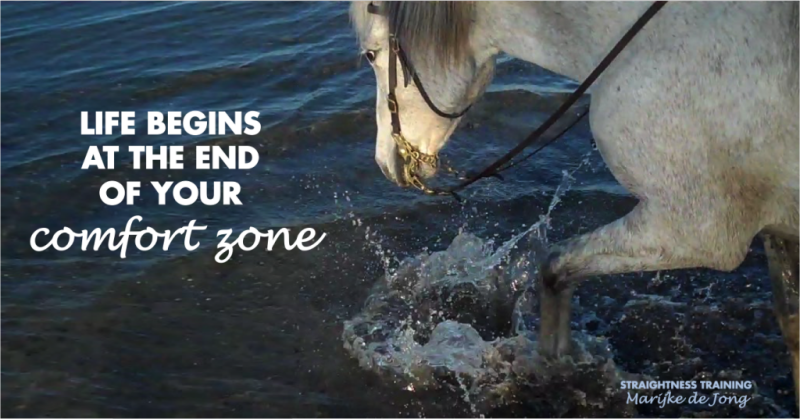 We need to provide a daily stretch for our horse, and we can do so:
We need to provide a daily stretch for our horse, and we can do so:
- By training our horse.
- By teaching our horse new things.
- By educating our horse in a logical order of progressive exercises.
- By schooling our horse so he can reach his full potential both physically and mentally seen.
By doing Straightness Training, we train not only our horse’s body, but we also stimulates his mind.
We encourage him to step into the so-called ‘figuring out’ state where he needs to figure out what we’d like him to do.
Because we teach him all kinds of things that are derived from nature, like:
- Exercises, such as the circle, shoulder-in, haunches-in, renvers, half pass, pirouette.
- Artificial movements, such as piaffe and passage.
- A certain ‘language’ so we’re able to teach him those exercises and movements with our gestures, aids, voice and whip cues.
Now are these things easy to learn?
Not always!
It can be challenging, both on a mental and physical level.
As a result, our horse will strengthen his mental and physical muscles.
Which is good, because it gives him an opportunity to escape the boring comfort zone.
So,
Let the blood flood flow through his veins and let him crack his brains!
And you can do so with Straightness Training:
- We give our horse a physical challenge by doing exercises. By putting effort into the exercises, he will bolster his blood circulation through the veins, and strengthen his muscles, which is very healthy.
- And while teaching those exercises, it will give our horse mental stimulation, because he has to crack his brains and figure out how to do the exercise.
So during ST he’s putting effort in meeting the request and concentrating on the task.
Therefore, he might lose his cute, forward positioned ears, since his ears are pinned in your direction or on the task.
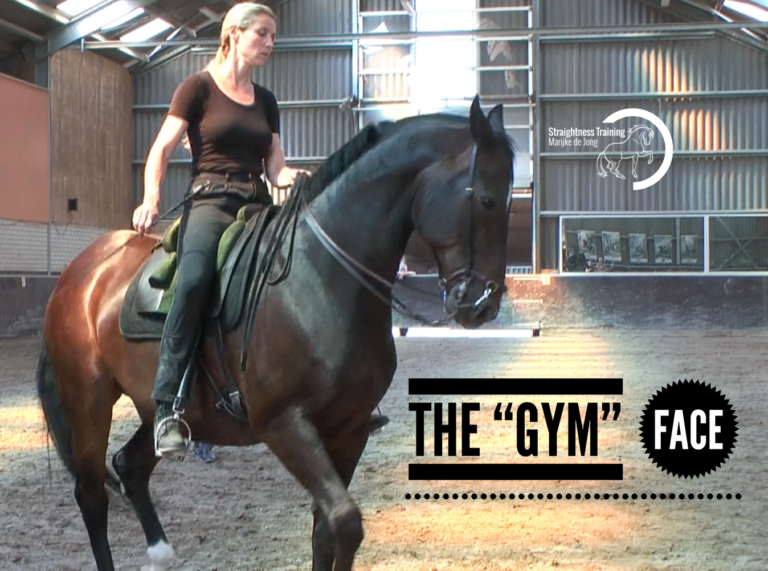 Therefore he might give you a “gym” face.
Therefore he might give you a “gym” face.
Embrace Your Horse’s “Gym Face”
You know what that is?
A “gym face”?
It’s when you are going to the gym:
Your body reacts in all sorts of funny ways when you’re lifting heavy – and your face is no exception!
Your mouth is pulled into a grimace, lips snarling, as if you’re ready to implode.
Believe it or not, your ugly “gym face” is your body’s way of trying to make you stronger during difficult exercises.
I bet you can’t stay expressionless while trying to do 10 push-ups or lift 25kg / 55lbs.
Try it for yourself, and you might notice that you can’t lift the weight.
Then, let your face do its thing, and you’ll likely be able to pick it up!
Plus, if you would have a tail, you might swish it during the process too!
Now the same is true for our horses.
So don’t worry about his “gym” face, or a swish of his tail here and there.
Because:
Don’t confuse the stretch zone with the stress zone!
In the stress zone, his mind will drop down and rely on his reptilian brain where instincts take over, such as fight, flight, freeze.
But the stretch zone is very healthy for your horse, both mentally and physically seen.
Here’s why:
The Mental Beneftits of the Stretch Zone:
The mental benefits of the doing and teaching things in the stretch zone are:
- It will level up his brain power.
- It helps to grow his thinking capacity.
- It will stimulate his mind.
- It will keep his brain active.
- It will expand his concentration power.
- It will increase his attention span.
- The more you go to the stretch zone, the more quickly he will learn.
In a way you could see it like this:
 ST for horses has the same beneficial effects as Sudoku for people!
ST for horses has the same beneficial effects as Sudoku for people!
It helps your horse to get in a figuring out state.
It makes him a creative guesser.
A puzzle solver.
Plus, it gives your horse a daily escape from the comfort zone.
The Physical Beneftits of the Stretch Zone:
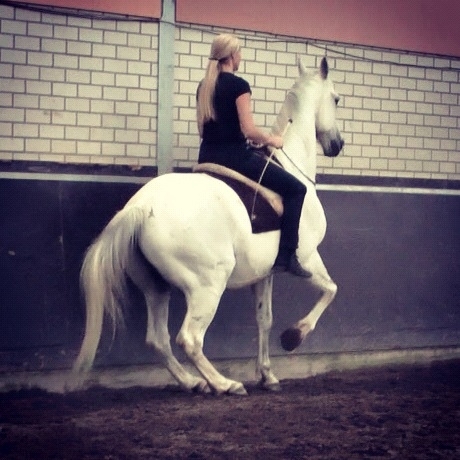 Besides this, also the physical part of ST is beneficial:
Besides this, also the physical part of ST is beneficial:
- Physical activity offers brain fuel.
- By boosting the blood circulation, doing exercises nourishes his brain with the nutrients and oxygen it needs to perform optimally.
- So doing exercises helps the brain work more efficiently.
- Physical activity strengthens his muscles.
- His body will be strong.
- He will stay in good health later in life.
So don’t make a happy flat-liner out of your horse!
Instead, enter the stretch zone on a daily basis!
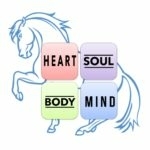 This means:
This means:
Provide Physical Activity and Mental Stimulation!
With a daily Straightness Training session, you can keep your horse can keep your horse fit, hale, and balanced in body, mind, heart, and soul.
Links to Releated and Relevant Articles:

